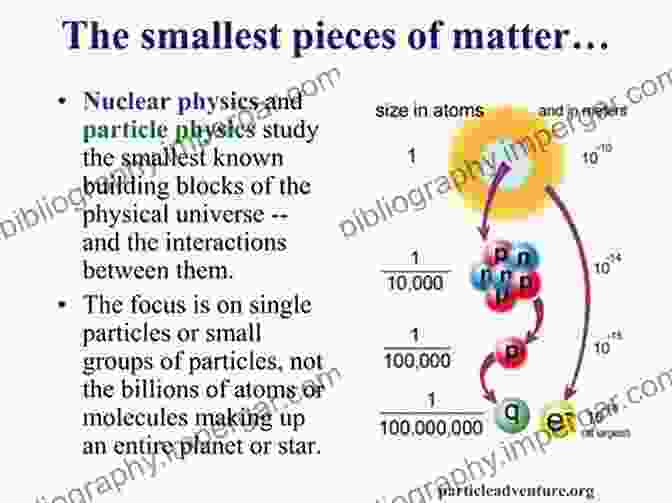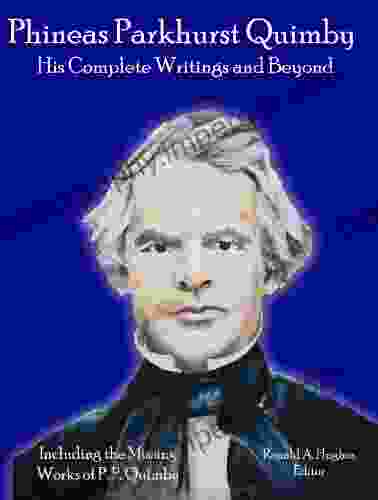Point Particles and Relativity: Unlocking the Secrets of the Universe


4.2 out of 5
| Language | : | English |
| File size | : | 7096 KB |
| Text-to-Speech | : | Enabled |
| Print length | : | 506 pages |
In the vast expanse of the cosmos, the smallest building blocks of matter play a pivotal role in shaping our understanding of the universe. Point particles, fundamental entities with no discernible internal structure, serve as the cornerstone of classical theoretical physics, providing a framework for understanding the behavior of matter from the microscopic to the cosmic scales.
This article embarks on a journey into the fascinating world of point particles and relativity, exploring the fundamental principles and concepts that underpin their behavior. We will delve into the principles of inertia, special relativity, and general relativity, unraveling the nature of spacetime and the profound implications for our understanding of the universe.
Point Particles: The Building Blocks of Matter
Point particles are idealized entities that lack any internal structure or spatial extension. They represent the fundamental units of matter in classical theoretical physics, serving as the building blocks for all complex matter. The concept of point particles has proven indispensable in describing a wide range of physical phenomena, from particle physics to astrophysics.
The behavior of point particles is governed by the fundamental principles of inertia and conservation laws. Newton's first law of motion, the law of inertia, states that an object at rest remains at rest, and an object in motion remains in motion at a constant velocity, unless acted upon by an external force. Conservation laws, such as the conservation of energy and momentum, play a crucial role in predicting the behavior of point particles in various interactions.
The Theory of Relativity: Redefining Space and Time
Albert Einstein's theory of relativity revolutionized our understanding of space and time, introducing new perspectives on the nature of the universe. Special relativity, published in 1905, challenged the classical notions of absolute space and time, demonstrating that time and space are not absolute but relative to the observer and the motion of objects.
The famous equation E=mc², derived from special relativity, highlights the equivalence of energy and mass, opening up new possibilities and implications for understanding the energy requirements of physical processes. The theory also introduced the concept of spacetime, a continuum that combines space and time into a single unified entity.
General relativity, published in 1915, extended special relativity by incorporating gravity into the framework. It describes gravity as a curvature of spacetime rather than a force, revolutionizing our understanding of the universe's large-scale structure and dynamics. General relativity has profound implications for cosmology, providing insights into the origin, evolution, and fate of the universe.
Point Particles in Relativity: Unraveling the Cosmos
The principles of special and general relativity have profound implications for the behavior of point particles. In special relativity, point particles can approach the speed of light, resulting in relativistic effects such as time dilation and length contraction. These effects have been experimentally verified in particle accelerators and astrophysical observations.
General relativity introduces gravitational effects on the motion of point particles. The curvature of spacetime influences the trajectories of particles, a phenomenon observed in the bending of light around massive objects and the precession of planetary orbits. Point particles play a crucial role in astrophysics, providing insights into the dynamics of black holes, neutron stars, and other extreme environments.
Applications and Significance
The concepts of point particles and relativity have far-reaching applications in various scientific disciplines, including particle physics, astrophysics, and cosmology. In particle physics, the Standard Model describes the fundamental particles that constitute matter and the forces that govern their interactions. Point particles serve as the building blocks for these fundamental particles.
In astrophysics, point particles help explain the behavior of celestial objects such as black holes, neutron stars, and quasars. The gravitational interactions between point particles play a significant role in shaping the observed phenomena in these extreme environments.
Cosmology, the study of the origin and evolution of the universe, heavily relies on point particles and relativity. The Big Bang theory, the leading cosmological model, describes the universe's origin as a point-like singularity and explains its subsequent expansion and evolution through the principles of relativity.
The study of point particles and relativity in classical theoretical physics provides a profound understanding of the fundamental building blocks of matter and the nature of spacetime. From the subatomic realm to the vast expanse of the cosmos, point particles play a crucial role in shaping our perception of the universe.
This journey into the quantum world has unveiled the intricacies of particle behavior and the interconnectedness of space and time. As we continue to probe the depths of theoretical physics, the concepts of point particles and relativity will undoubtedly remain indispensable tools for unraveling the mysteries of the universe.
4.2 out of 5
| Language | : | English |
| File size | : | 7096 KB |
| Text-to-Speech | : | Enabled |
| Print length | : | 506 pages |
Do you want to contribute by writing guest posts on this blog?
Please contact us and send us a resume of previous articles that you have written.
 Book
Book Novel
Novel Page
Page Chapter
Chapter Text
Text Story
Story Genre
Genre Reader
Reader Library
Library Paperback
Paperback E-book
E-book Magazine
Magazine Newspaper
Newspaper Paragraph
Paragraph Sentence
Sentence Bookmark
Bookmark Shelf
Shelf Glossary
Glossary Bibliography
Bibliography Foreword
Foreword Preface
Preface Synopsis
Synopsis Annotation
Annotation Footnote
Footnote Manuscript
Manuscript Scroll
Scroll Codex
Codex Tome
Tome Bestseller
Bestseller Classics
Classics Library card
Library card Narrative
Narrative Biography
Biography Autobiography
Autobiography Memoir
Memoir Reference
Reference Encyclopedia
Encyclopedia Gary Nealon
Gary Nealon Fay Weldon
Fay Weldon Thomas P Ostrom
Thomas P Ostrom Fanny Lopez
Fanny Lopez Ronald M James
Ronald M James Fx Holden
Fx Holden Raouf A H El Mallawany
Raouf A H El Mallawany Gunnar Beck
Gunnar Beck Gary Parker
Gary Parker Everydaypaper
Everydaypaper Fran Dwelle
Fran Dwelle Gary Lincoff
Gary Lincoff Life Hacks Books
Life Hacks Books G Hegde
G Hegde Gail F Dawson
Gail F Dawson Gary Brizendine
Gary Brizendine Eva Wells
Eva Wells Stephen Jones
Stephen Jones Fiona Maccarthy
Fiona Maccarthy Kimberly Espinel
Kimberly Espinel
Light bulbAdvertise smarter! Our strategic ad space ensures maximum exposure. Reserve your spot today!

 Harold PowellDig In and Devour: Uncovering the Culinary History of WWII with "Spuds, Spam,...
Harold PowellDig In and Devour: Uncovering the Culinary History of WWII with "Spuds, Spam,...
 Marc FosterUnlock the Secrets of Mind Healing: Discover the Complete Writings of Phineas...
Marc FosterUnlock the Secrets of Mind Healing: Discover the Complete Writings of Phineas... Bernard PowellFollow ·16.5k
Bernard PowellFollow ·16.5k Camden MitchellFollow ·18.7k
Camden MitchellFollow ·18.7k W.B. YeatsFollow ·10.4k
W.B. YeatsFollow ·10.4k Elmer PowellFollow ·3.2k
Elmer PowellFollow ·3.2k Vincent MitchellFollow ·8.2k
Vincent MitchellFollow ·8.2k Kevin TurnerFollow ·14.8k
Kevin TurnerFollow ·14.8k Allen GinsbergFollow ·6.7k
Allen GinsbergFollow ·6.7k Colt SimmonsFollow ·15.3k
Colt SimmonsFollow ·15.3k

 Alexander Blair
Alexander BlairBecoming Sports Agent Masters At Work: The Ultimate Guide
What is a Sports...

 Xavier Bell
Xavier BellUnveiling the Enchanting World of Upper Bohemia: A Review...
A Captivating...

 Chris Coleman
Chris ColemanUnveiling the Secrets: Extreme Rapid Weight Loss Hypnosis...
In the relentless pursuit of a slimmer,...
4.2 out of 5
| Language | : | English |
| File size | : | 7096 KB |
| Text-to-Speech | : | Enabled |
| Print length | : | 506 pages |














